Who doesn't love a good meatball? This isn't just any meatball; it's about crafting the perfect, juicy, and flavorful bite right in your own kitchen. Forget the store-bought stuff – we're diving headfirst into the world of recipe homemade meatballs that will knock your socks off. Seriously, prepare to impress your family, friends, or even just yourself with this ridiculously easy and delicious recipe.
Ingredients for Perfect Homemade Meatballs
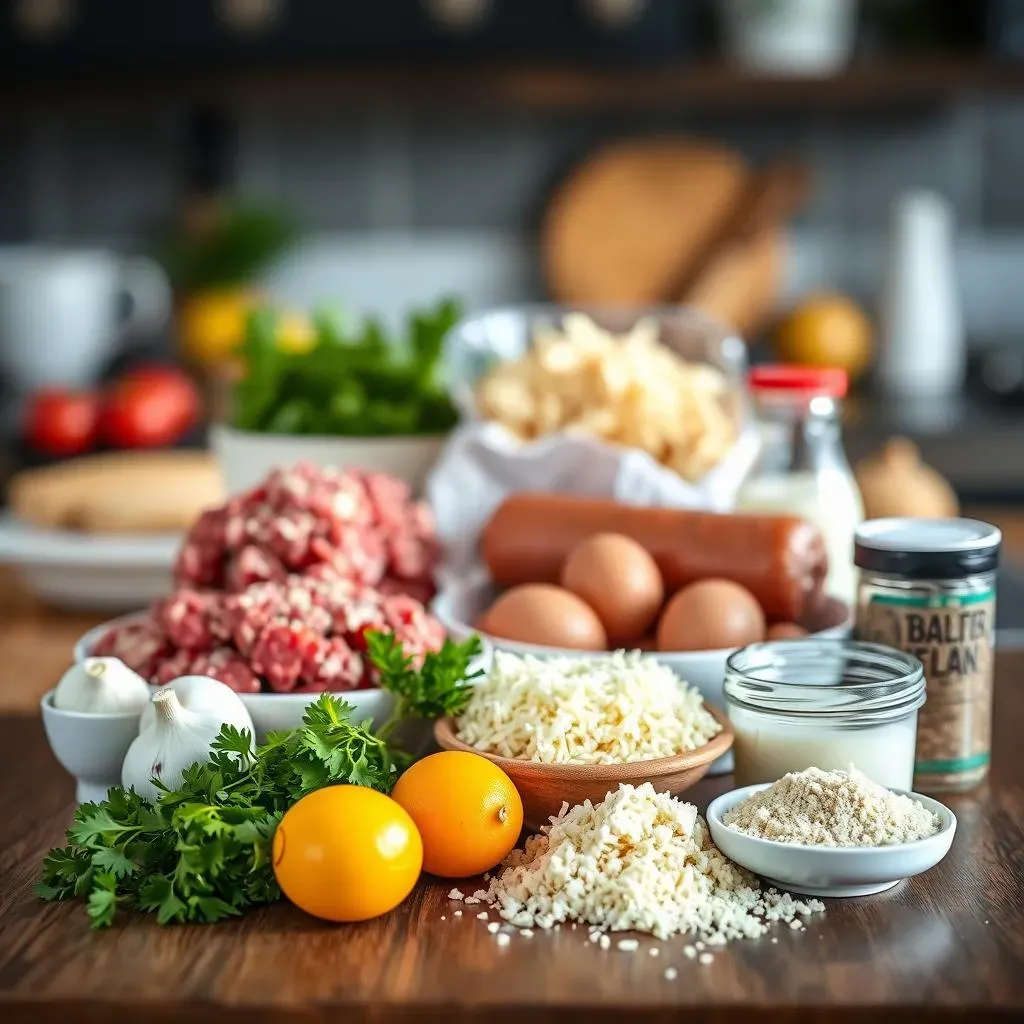
Ingredients for Perfect Homemade Meatballs
Alright, let's talk ingredients! This is where the magic starts. You can't make amazing meatballs with subpar ingredients, right? So, let's break down the essentials for crafting meatballs that are bursting with flavor and have that perfect, tender texture. First up, we've got the meat. A blend is key here – I'm talking ground beef and Italian sausage. The beef gives you that classic meatball taste, while the sausage adds a punch of flavor and a bit of fat to keep things juicy. Think about it, the better the ingredients, the better the end result.
Next, you'll need a binder to hold everything together. Breadcrumbs are a must, and I prefer using Italian breadcrumbs for that extra touch of seasoning. Eggs are another crucial component, adding moisture and helping to bind the meat and breadcrumbs together. Then comes the flavor boosters: garlic (and lots of it!), Parmesan cheese, fresh parsley, and a blend of Italian seasonings. Don't skimp on these – they're what really make your meatballs sing! And finally, a splash of milk or water helps to keep the mixture moist and prevents the meatballs from drying out during cooking.
Now, let's get into the specifics. For the ground beef, I recommend using a blend that's around 80/20 – that's 80% lean and 20% fat. The fat is important for flavor and moisture, so don't go too lean! As for the Italian sausage, you can use either sweet or hot, depending on your preference. If you're using hot sausage, you might want to reduce the amount of red pepper flakes in the recipe, or omit them altogether. And for the breadcrumbs, if you don't have Italian breadcrumbs on hand, you can use plain breadcrumbs and add your own Italian seasoning blend. Just make sure to use breadcrumbs that are finely ground, so they blend seamlessly into the meat mixture.
Ingredient | Why it's Important | Pro Tip |
|---|---|---|
Ground Beef (80/20) | Classic meatball flavor and texture | Don't go too lean, fat = flavor! |
Italian Sausage | Adds flavor and keeps meatballs juicy | Sweet or hot, your choice! |
Italian Breadcrumbs | Binds ingredients and adds seasoning | Finely ground for best results |
Eggs | Moisture and binding | Use large eggs |
Garlic | Flavor, flavor, flavor! | Use fresh, and don't be shy! |
Parmesan Cheese | Adds savory, salty flavor | Grated fresh is always best |
Fresh Parsley | Freshness and flavor | Finely chopped |
Italian Seasoning | Classic Italian flavor blend | Adjust to your taste |
Milk or Water | Moisture, keeps meatballs tender | Just a splash! |
StepbyStep Guide to Making Homemade Meatballs
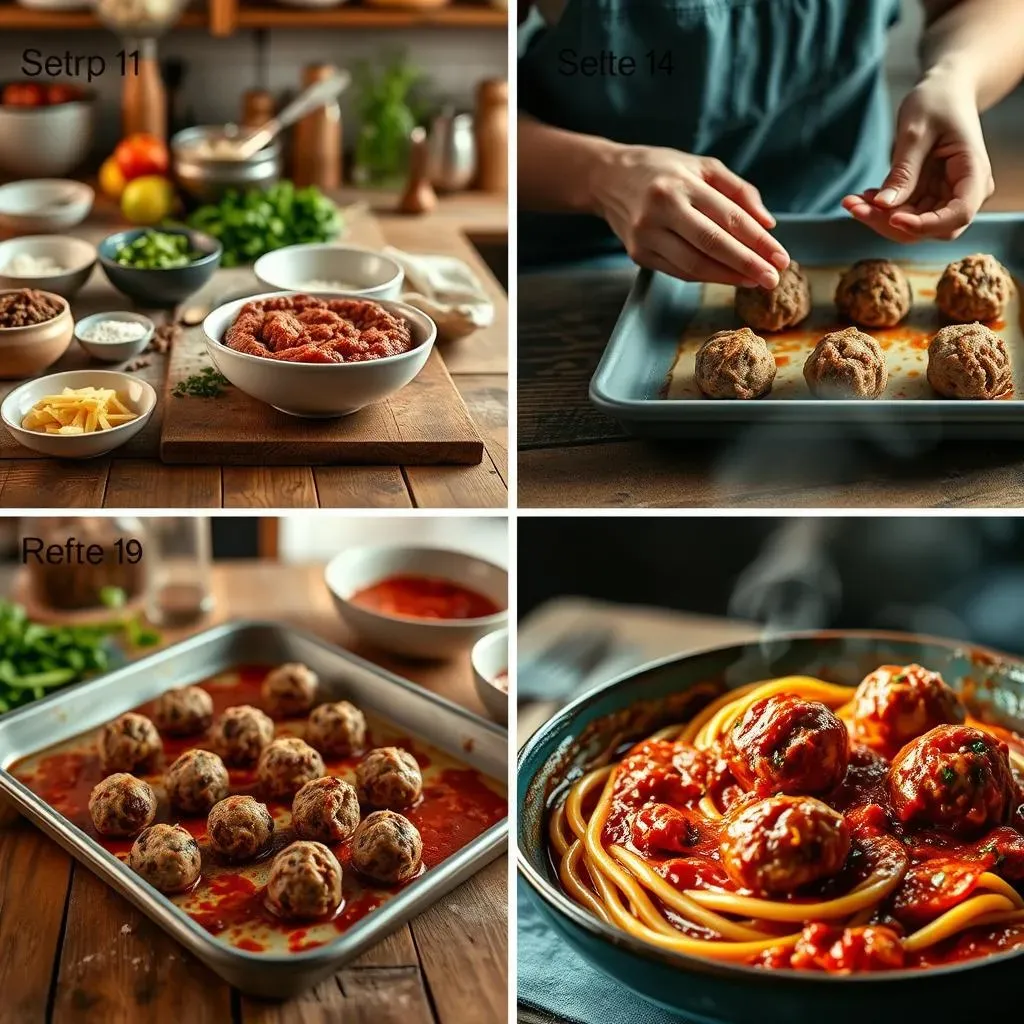
StepbyStep Guide to Making Homemade Meatballs
you've got your ingredients prepped and ready to go. Now comes the fun part: actually making the meatballs! This step-by-step guide to making homemade meatballs will walk you through the process, ensuring you get perfectly tender and flavorful meatballs every single time. First, grab a large bowl – big enough to comfortably mix all your ingredients without making a mess. Add the ground beef, Italian sausage, breadcrumbs, eggs, Parmesan cheese, garlic, parsley, Italian seasoning, and milk (or water) to the bowl. It's time to get your hands dirty!
Now, gently mix everything together until just combined. Be careful not to overmix, as this can result in tough meatballs. You want the ingredients to be evenly distributed, but don't work the mixture too much. Once everything is combined, it's time to form the meatballs. Grab a small amount of the mixture – about 2 tablespoons – and gently roll it between your palms to form a ball. Aim for a consistent size, so the meatballs cook evenly. Place the formed meatballs on a baking sheet lined with parchment paper. This prevents them from sticking and makes cleanup a breeze.
Once all the meatballs are formed, it's time to cook them. You have a couple of options here: you can bake them in the oven or cook them on the stovetop. Baking is a great option if you're making a large batch, as it allows you to cook all the meatballs at once. To bake, preheat your oven to 375°F (190°C) and bake the meatballs for 20-25 minutes, or until they're cooked through and lightly browned. If you prefer to cook them on the stovetop, heat a tablespoon of olive oil in a large skillet over medium heat. Add the meatballs to the skillet and cook, turning occasionally, until they're browned on all sides and cooked through. This usually takes about 15-20 minutes.
Whether you choose to bake or cook them on the stovetop, make sure the meatballs are cooked through before serving. You can check for doneness by cutting one open – it should be cooked through and no longer pink in the center. Once they're cooked, you can add them to your favorite sauce, serve them over pasta, or enjoy them in a meatball sub. The possibilities are endless!
Step | Description | Pro Tip |
|---|---|---|
1. Combine Ingredients | Mix all ingredients in a large bowl. | Don't overmix! |
2. Form Meatballs | Roll mixture into even-sized balls. | Use about 2 tablespoons per meatball. |
3. Cook Meatballs | Bake or cook on the stovetop. | Ensure they're cooked through. |
4. Serve & Enjoy! | Add to sauce, pasta, or subs. | Get creative! |
Variations on the Classic Homemade Meatballs Recipe
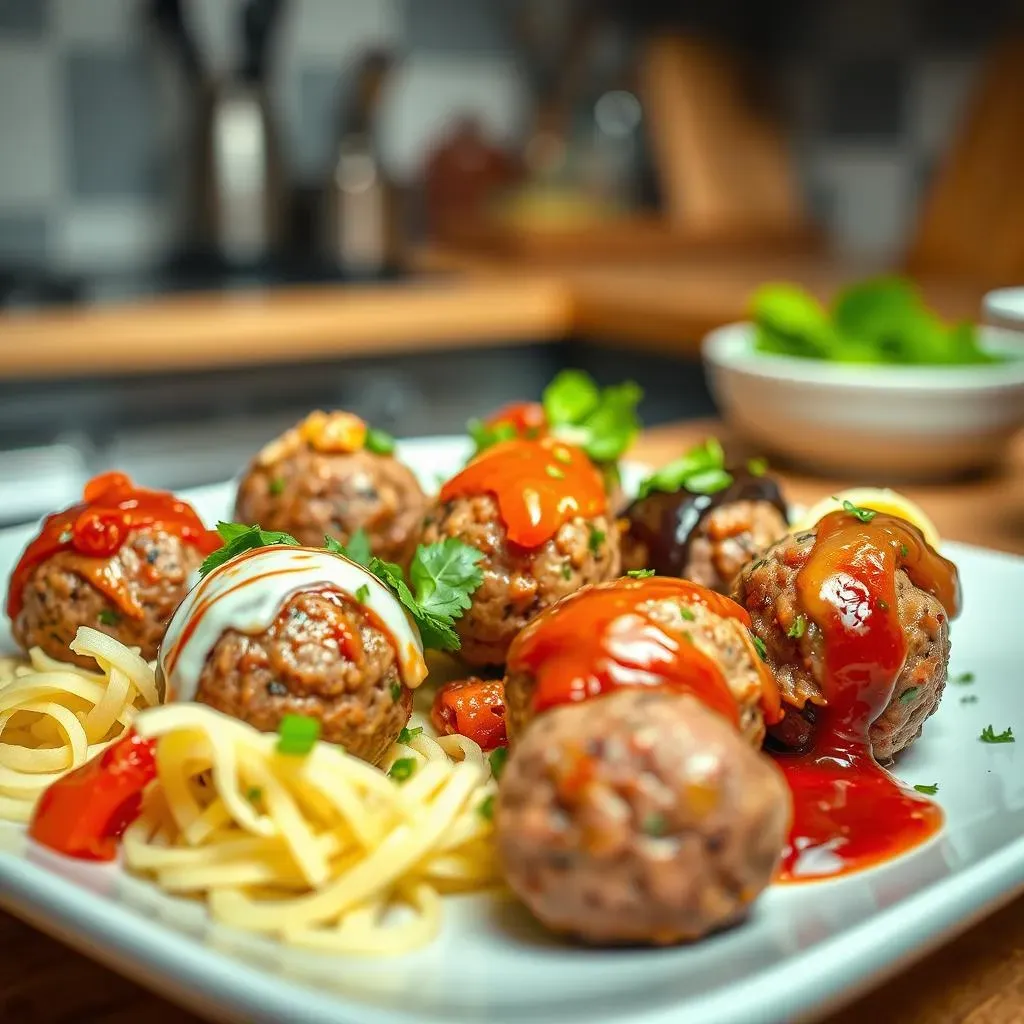
Variations on the Classic Homemade Meatballs Recipe
Spice It Up: Adding a Kick to Your Meatballs
So, you've mastered the classic meatball, huh? Awesome! But let's be real, sometimes you want to shake things up a bit. That's where variations come in, and trust me, the possibilities are endless. If you're a fan of heat, consider adding some red pepper flakes to your meat mixture. A pinch or two can add a subtle kick, while a full teaspoon will really bring the fire. Another great option is to use hot Italian sausage instead of sweet. This will infuse your meatballs with a spicy, savory flavor that's hard to resist.
For those who like a bit of sweetness with their spice, try adding a drizzle of honey or maple syrup to the meat mixture. This might sound a little crazy, but it creates a delicious sweet-and-spicy flavor profile that's surprisingly addictive. You can also experiment with different types of peppers, such as jalapeños or poblanos. Just make sure to remove the seeds and membranes before adding them to the mixture, unless you really want to crank up the heat! And don't forget about smoked paprika – a dash of this smoky spice can add a depth of flavor that will take your meatballs to the next level.
Meatball Makeover: Swapping Out the Protein
While ground beef and Italian sausage are the classic choices for meatballs, there's no reason to limit yourself. If you're looking for a healthier option, consider using ground turkey or chicken instead. These leaner proteins will result in lighter meatballs that are still packed with flavor. Just be sure to add a bit of extra moisture to the mixture, as turkey and chicken tend to be drier than beef. A tablespoon or two of olive oil or chicken broth should do the trick.
For a more adventurous twist, try using ground lamb or pork. Lamb meatballs have a rich, gamey flavor that pairs well with Mediterranean spices like cumin and coriander. Pork meatballs are often used in Asian cuisine and can be seasoned with ingredients like soy sauce, ginger, and garlic. You can even make vegetarian meatballs using ingredients like lentils, chickpeas, or mushrooms. Just make sure to use a binder like breadcrumbs or eggs to hold everything together. No matter what type of protein you choose, the key is to experiment and find what you like best!
Protein | Flavor Profile | Spice Suggestions |
|---|---|---|
Ground Turkey | Lighter, milder | Sage, thyme, garlic powder |
Ground Chicken | Similar to turkey, slightly more delicate | Rosemary, oregano, onion powder |
Ground Lamb | Rich, gamey | Cumin, coriander, mint |
Ground Pork | Savory, slightly sweet | Soy sauce, ginger, garlic |
Lentils/Chickpeas | Earthy, nutty | Cumin, turmeric, chili powder |
Serving Suggestions: What to Eat with Your Homemade Meatballs
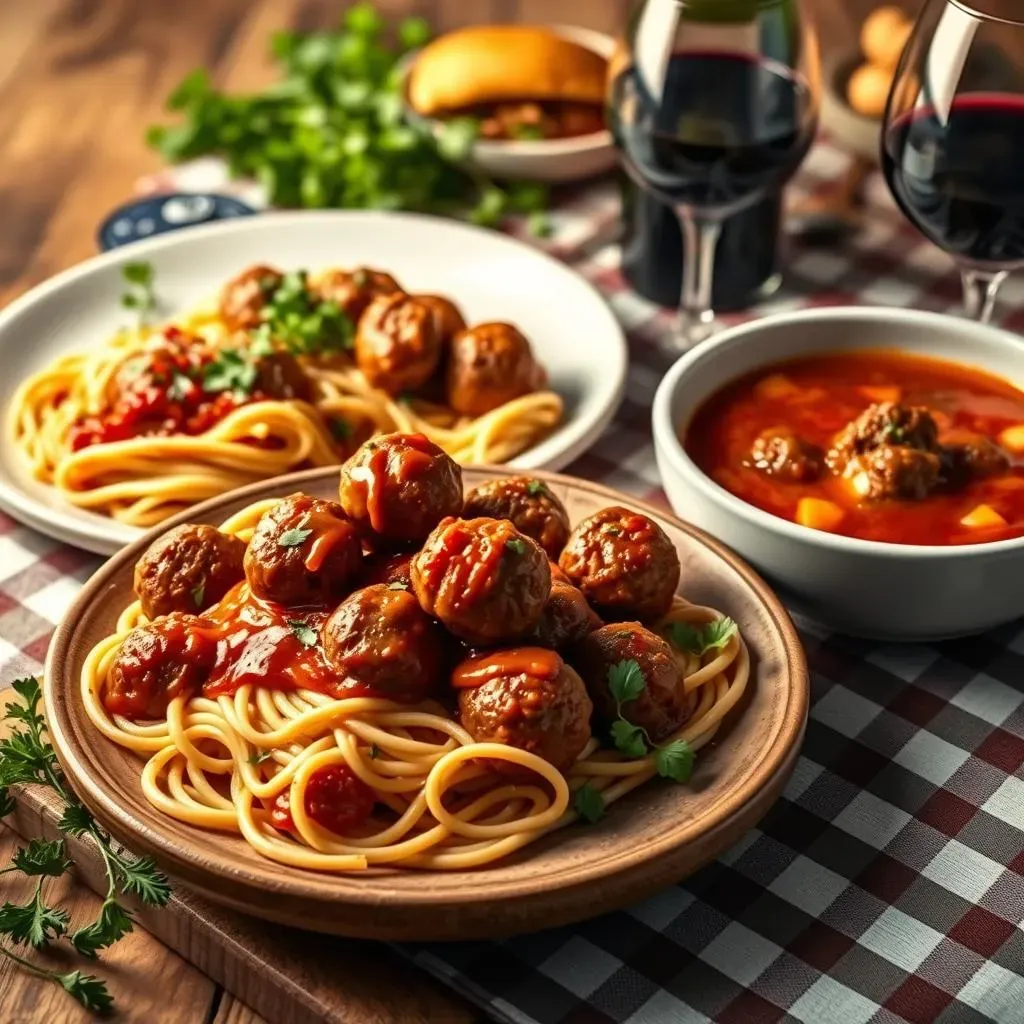
Serving Suggestions: What to Eat with Your Homemade Meatballs
you've got a pile of delicious homemade meatballs – now what? The beauty of meatballs is their versatility; they can be the star of the show or a supporting player in a wide range of dishes. Let's start with the classics. Spaghetti and meatballs are a timeless pairing for a reason. The rich, savory meatballs nestled in a bed of perfectly cooked pasta, all smothered in a tangy tomato sauce – it's comfort food at its finest. But don't stop there! Meatball subs are another crowd-pleaser, perfect for a casual lunch or dinner. Load up a toasted hoagie roll with meatballs, marinara sauce, and plenty of melted mozzarella cheese for a truly satisfying meal.
But meatballs aren't just for pasta and subs. Get creative and add them to soups, stews, or even pizzas! Meatball soup is a hearty and flavorful option, perfect for a chilly day. Simply add your meatballs to a vegetable broth with some diced carrots, celery, and onions, and simmer until the vegetables are tender. For a unique pizza topping, slice your meatballs and scatter them over your favorite pizza crust with some tomato sauce, cheese, and veggies. And if you're looking for a quick and easy appetizer, serve your meatballs with a variety of dipping sauces, such as marinara, barbecue, or sweet chili sauce. Trust me, your guests will thank you!
Want to take things even further? Consider serving your meatballs with polenta, creamy mashed potatoes, or a side of roasted vegetables. Polenta provides a comforting and satisfying base for your meatballs, while mashed potatoes offer a classic pairing that's hard to resist. Roasted vegetables, such as broccoli, Brussels sprouts, or carrots, add a healthy and flavorful element to your meal. And if you're looking for a lighter option, serve your meatballs in a lettuce wrap with some fresh herbs and a drizzle of balsamic glaze. The possibilities are truly endless when it comes to serving your homemade meatballs. So, get creative, have fun, and enjoy!
Serving Suggestion | Description | Why it Works |
|---|---|---|
Spaghetti and Meatballs | Classic comfort food | Perfect combination of flavors and textures |
Meatball Subs | Satisfying and easy to make | Great for lunch or dinner |
Meatball Soup | Hearty and flavorful | Perfect for a chilly day |
Meatball Pizza | Unique and delicious | Adds a savory element to your pizza |
Dipping Sauces | Quick and easy appetizer | Offers a variety of flavors |
Storing and Reheating Your Delicious Homemade Meatballs
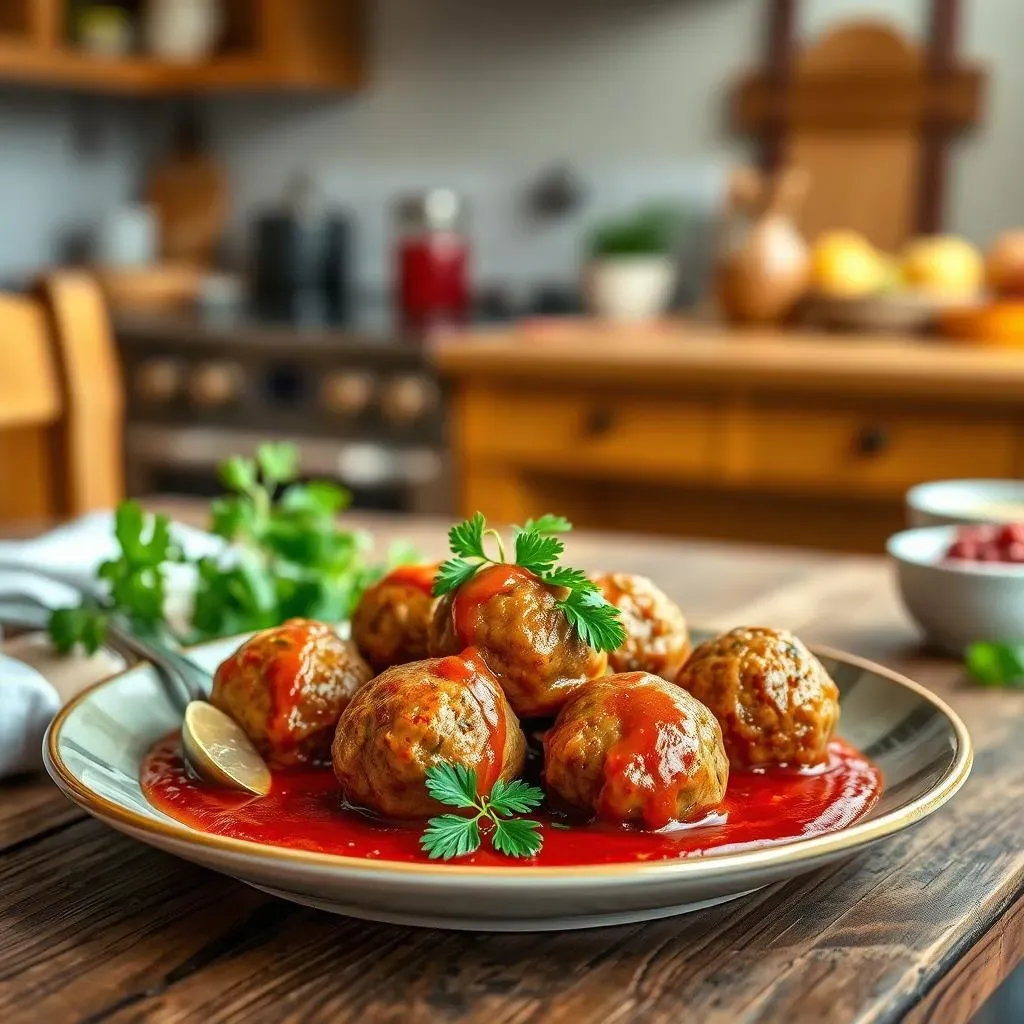
Storing and Reheating Your Delicious Homemade Meatballs
Alright, so you've made a big batch of these amazing meatballs, and now you're wondering how to keep them fresh for later, right? No worries, I've got you covered! Proper storage is key to maintaining their flavor and texture. If you plan on using them within 3-4 days, simply store them in an airtight container in the refrigerator. Make sure they've cooled down completely before you pop them in the fridge; this prevents condensation from forming, which can make them soggy. For longer storage, freezing is the way to go. Place the cooked meatballs in a single layer on a baking sheet and freeze them for about an hour, or until they're solid. This prevents them from sticking together when you transfer them to a freezer bag or container. Once they're frozen solid, you can store them in the freezer for up to 2-3 months. Just be sure to label the bag with the date, so you know when they were made.
Now, let's talk about reheating. There are several ways to reheat your meatballs, depending on your preference and how much time you have. If you're reheating them from the fridge, you can simply add them to your favorite sauce and simmer until they're heated through. This is a great option if you're serving them with pasta or in a meatball sub. You can also reheat them in the oven. Preheat your oven to 350°F (175°C) and place the meatballs in a baking dish with a little bit of sauce or water to prevent them from drying out. Cover the dish with foil and bake for about 15-20 minutes, or until they're heated through. If you're reheating them from frozen, you can either thaw them in the refrigerator overnight or reheat them directly from frozen. To reheat them from frozen, add them to your sauce and simmer for a longer period, or bake them in the oven for about 30-40 minutes. Just make sure they're heated through before serving.
Microwaving is also an option, but it's not my favorite, as it can sometimes make the meatballs a bit rubbery. If you do choose to microwave them, place them in a microwave-safe dish with a little bit of sauce or water, and microwave on medium power in 30-second intervals, until they're heated through. No matter which method you choose, make sure the meatballs are heated to an internal temperature of 165°F (74°C) to ensure they're safe to eat.
Storage Method | Timeframe | Reheating Tips |
|---|---|---|
Refrigerator | 3-4 days | Simmer in sauce, bake in oven |
Freezer | 2-3 months | Thaw overnight or reheat from frozen |
Microwave | N/A | Use with caution, may become rubbery |
- Cool meatballs completely before storing.
- Store in airtight containers or freezer bags.
- Label with the date for easy tracking.
- Ensure meatballs are heated to 165°F (74°C) before serving.
Conclusion: Mastering the Art of Homemade Meatballs
So there you have it – your complete guide to crafting the perfect homemade meatballs. From selecting the right ingredients to exploring creative variations and mastering cooking techniques, you're now equipped to create delicious, crowd-pleasing meatballs that are far superior to anything you can buy in a store. Whether you serve them with spaghetti, in a sub, or as a standalone appetizer, these meatballs are sure to be a hit. Don't be afraid to experiment with different flavors and ingredients to create your own signature meatball recipe. Happy cooking, and enjoy!